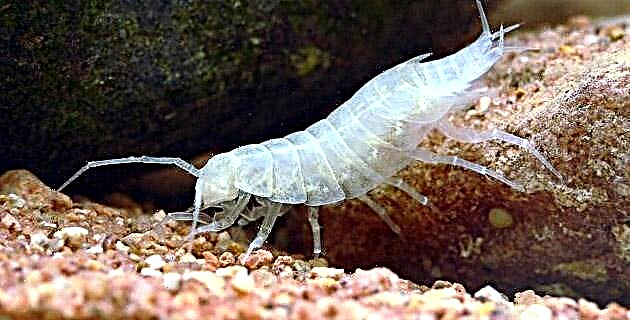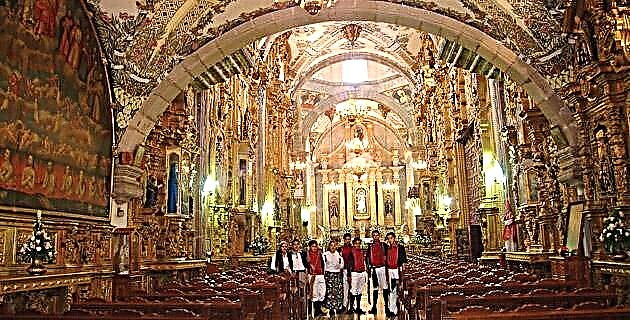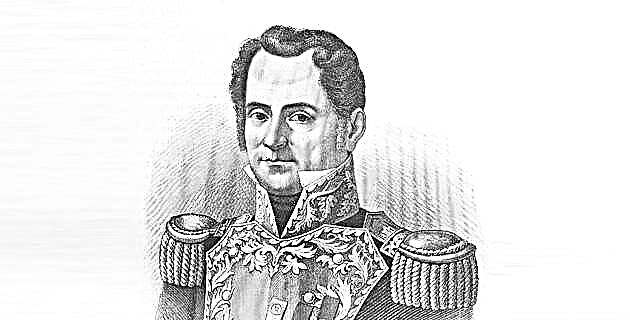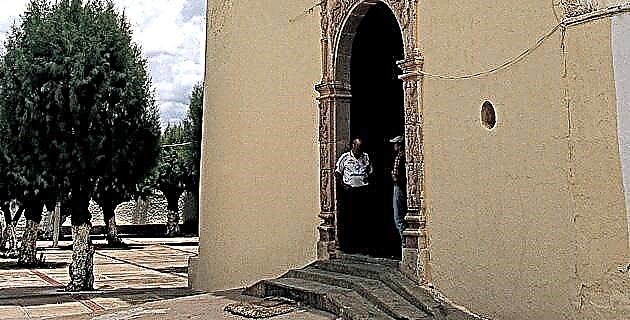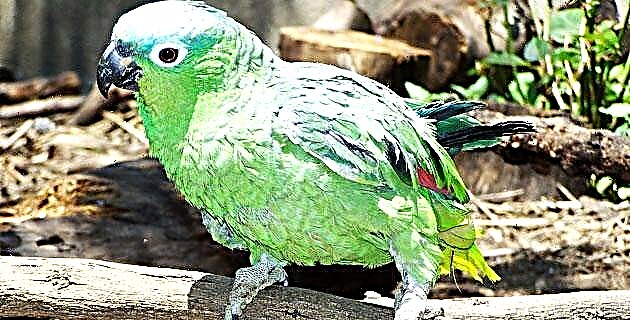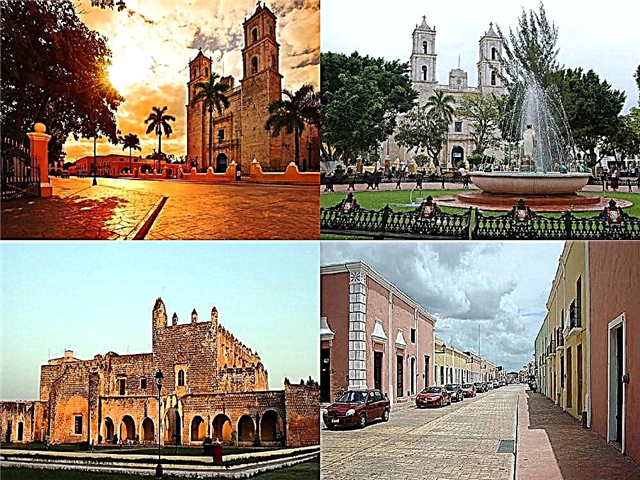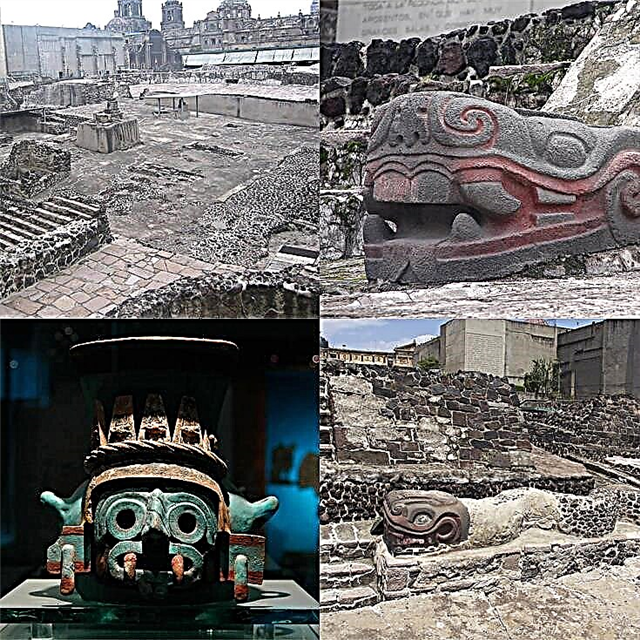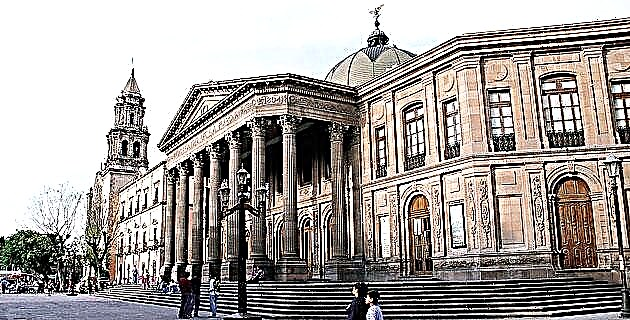
Spend an incredible weekend in this colonial city.
The beautiful and stately city of San Luis Potosí, capital of the state of the same name, is characterized by the rich baroque quarry constructions that stand out from the elegant but severe neoclassical style that predominates in the center of the city, which was declared a Historical Heritage in 1990. Currently, renovation work is being carried out there, especially in its pedestrian streets and on the facades of some large houses. The pavement and cobblestones of the streets and sidewalks are being repaired, with which the route, already interesting in itself, will be safer and more rewarding.
The city of San Luis Potosí is located 613 km from Mexico City and is reached by federal highway no. 57.
FRIDAY
Upon our arrival in the city we were recommended to stay at HOTEL REAL PLAZA, located on Avenida Carranza, a long and bustling street with a median in the center where many shops and boutiques are located.
Once settled, we went out to dinner. On the aforementioned avenue there is a wide variety of restaurants, for all tastes. We decided to go directly to LA CORRIENTE, two blocks from the hotel towards the center. It is an old and stately large house adapted as a restaurant and bar. It is very beautiful inside, with hanging plants, pictures on its walls and a photographic collection of old San Luis; at the entrance there is a wall map of the state with its climatic zones. Dinner is excellent: Huasteca enchiladas with cecina or chamorro pibil. The after-dinner is very pleasant, with a guitarist who sings songs without stridency. How delicious it is to talk like that!
SATURDAY
After a restful and restful rest, we are ready to explore the city. We head downtown, to the PLAZA DE ARMAS, to have breakfast at LA POSADA DEL VIRREY, one of the most traditional restaurants in San Luis. There, from early on, coffee growers and friends meet to talk about their things, the news of the day and change the world. To "live" with them is to enter an environment typical of small cities. On the second floor there is a collection of old photographs and that is how we found out that this house is called CASA DE LA VIRREINA or “de la Condesa”, because Mrs. Francisca de la Gándara lived here, who was the wife of Don Félix María Calleja and , therefore, the only Mexican “viceroy”.
Most of the stores are still closed and we learned that the store usually opens around ten o'clock. As we are already in the center, we begin our exploration in the CATHEDRAL, a beautiful enclosure that combines baroque and neoclassical styles. It is composed of three naves and presents stained glass windows and Carrara marble images worthy of being appreciated in detail, in addition to the altar.
Then, in front of the square, we visited the MUNICIPAL PALACE, from the 19th century, which formerly housed the Royal Houses, and which for some time was the episcopal residence. As we climb the stairs we see a beautiful stained glass window of the city's coat of arms. On the other side of the square is the PALACIO DE GOBIERNO, whose construction began at the end of the 18th century. It is a large enclosure that has undergone modifications over time. On the upper floor there are several rooms that can be visited, such as the Governors', the Receptions and the Hidalgo Room. A museum-like room stands out, with wax figures of Benito Juárez and the princess of Salm-Salm that represent the scene in which the latter on her knees asks the president for the pardon of Maximiliano de Habsburgo, and Juárez denies it. This is a passage of national history that took place exactly in this palace of San Luis.
We direct our steps to PLAZA DEL CARMEN where we plan to visit three points of interest. The first thing that catches your attention is the TEMPLO DEL CARMEN, with a unique churrigueresque style on its facade; in its interior the baroque, plateresque and neoclassical are combined. It dates from the mid-18th century and housed the order of the Discalced Carmelites. To the left of the altar is the sumptuous plateresque façade finished with mortar that gives way to the CAMARÍN DE LA VIRGEN - the pride of all Potosinos. This enclosure is a chapel in the shape of a shell covered with gold leaf. A marvel.
We continue our exploration in the TEATRO DE LA PAZ inside which we can admire some bronze figures and mosaic murals. To take a break we went to the CAFÉ DEL TEATRO, just on the corner, and savored a good cappuccino to regain energy.
While in the cafe we found out that there is a fourth place that we will have to visit and that was not part of our program: the MUSEUM OF POTOSIN TRADITIONS. This museum, practically unknown, is located on one side of the Temple of Carmen and consists of three small rooms, in which the representations of some brotherhoods stand out during the parade of the famous PROCESSION OF SILENCE, which takes place on Friday night of Holy Week.
Finally, we enter the NATIONAL MUSEUM OF THE MASK, which is located in front of the theater. The mansion that houses it is neoclassical in style, covered with quarry like almost the entire historic center of the city. Inside we enjoy countless masks from many corners of the country. It is worth knowing.
At the end of the visit we realize that the hustle and bustle has decreased. San Luis rests, it is siesta time, and we have no choice but to do the same. We are looking for a place to eat. In Galeana street number 205 we find RESTAURANT 1913, which is located in a house that was rehabilitated a few years ago. There they serve Mexican food from different regions, and as an appetizer we ordered Oaxacan grasshoppers.
After resting for a while at the hotel, we renew the spirit of knowing more about this surprising city. We return to the historic center and go directly to the complex of the EX CONVENTO DE SAN FRANCISCO. We first entered the POTOSINO REGIONAL MUSEUM because we found out that it closes at seven. On the ground floor we admire pre-Hispanic objects, especially from the Huasteca culture. In one of the rooms, the figure of the “Huasteco adolescent” stands out, discovered in the archaeological site EL CONSUELO, in the municipality of Tamuín.
On the second floor we discover a chapel, the only one of its kind in the country because it is precisely on the second floor. It is the ARANZAZÚ CHAPEL of majestic baroque style. On the outside of this chapel, on the PLAZA DE ARANZAZÚ, there is another pride of San Luis: an unparalleled churrigueresque style window.
To digest everything we have seen so far, we sat down on a bench in the bucolic JARDÍN DE SAN FRANCISCO, known as “Guerrero Garden”. The afternoon is falling and it begins to cool. People stroll leisurely, enjoying the moment while the bells tolling for mass. Before mass begins in the CHURCH OF SAN FRANCISCO, we enter to admire another of the baroque jewels of the city. The oil paintings and decoration are beautiful, as is a glass votive offerings, in the shape of a caravel, hanging from the dome. However, nothing compares to the riches within the sacristy. With a bit of luck you can visit it, as it is usually closed.
San Luis doesn't seem to have a very active nightlife, at least not in its center. We are exhausted and looking for a peaceful place to dine. A while ago, when we were walking in the former convent complex, we saw a restaurant that we wanted to have a terrace. Here we go. It is the CALLEJÓN DE SAN FRANCISCO RESTAURANT. Although it does not offer typical regional food, any dish is very good and sitting on the terrace, under a starry sky and cool temperatures, is very pleasant.
SUNDAY
Due to the rush of going out to explore the city, yesterday we did not have time to enjoy the panoramic views from the top of the hotel. Today we do it and we realize that San Luis is a city on a plain, surrounded by hills.
We have breakfast at LA PARROQUIA, another typical place in San Luis, located in front of the PLAZA FUNDADORES, on Carranza Avenue. Potosine enchiladas are a must.
We consult our tourist guide and map to decide what to do today. There are many things that we would like to know, but time would not reach us. The seven neighborhoods, other museums, two recreational parks, the SAN JOSÉ Dam, more churches and, as if that were not enough, the surroundings of the city, such as the old mining town of CERRO DE SAN PEDRO, just 25 km away, some farms , or MEXQUITIC DE CARMONA, 35 km towards Zacatecas, where there is a zoo, and the JOSÉ VILET MUSEUM OF NATURAL SCIENCES. We begin our exploration by walking a bit to visit the chapels and the building of the RECTORÍA DE LA UASLP, formerly a Jesuit convent.
We walk south along Zaragoza Street, the longest pedestrian artery in the country, which later becomes Guadalupe Avenue, to see one of the city's icons: LA CAJA DE AGUA, a neoclassical monument inaugurated in 1835; in its origins it supplied water from the Cañada del Lobo; today is a point that every visitor should know. Nearby is the SPANISH WATCH. It is a donation made to the city by the Spanish community at the beginning of the 20th century. Through a glass at the base of the pedestal you can see the machinery of such a unique clock.
We continue south along the pedestrian median of the tree-lined road, until we reach the SANCTUARY OF GUADALUPE, also known as the “Minor Basilica of Guadalupe”. This enclosure, completed in 1800, is well worth appreciating in detail because it is one of the best examples of the transition between the Baroque and Neoclassical styles. There is a glass votive offerings similar to the one we saw yesterday in the church of San Francisco.
On the way back, we take another street to see the plaza and the TEMPLO DE SAN MIGUELITO, the most traditional neighborhood in the city, although not the oldest, since both Santiago and Tlaxcala were founded in 1592, and San Miguelito in 1597. It was originally called the Santísima Trinidad neighborhood, and in 1830 it took its current name.
Throughout the tour we have enjoyed the local architecture in the houses with sober facades and blacksmith windows. All very well preserved.
As we do not want to end our visit and remain curious, we take a taxi to visit the TANGAMANGA I PARK, another pride of the Potosinos. It is a place for recreation that has sports facilities, from jogging tracks, soccer fields and bicycle and motocross tracks, to archery fields. There are also nurseries, two artificial lakes, playgrounds, palapas with grills, two theaters, an observatory with its planetarium, the TANGAMANGA SPLASH spa, and the MUSEUM OF POPULAR ARTS. Because it is a typical Sunday with a clear sky and intense blue, bright sun and a pleasant temperature, the park is very full.
After purchasing two of the city's most typical products: Constanzo chocolates and prickly pear cheeses, we found ourselves eating at RINCÓN HUASTECO RESTAURANT on Carranza Avenue. Huasteca cecina is highly recommended, and today, being Sunday, they also offer zacahuil, that gigantic Huasteco tamale. Delicious!
The visit to San Luis concludes. We have known so many things in such a short time. However, we feel that we barely took a glimpse of a city that has great corners and secrets waiting for the visitor. We missed, among many other things, the tour in the tourist truck, but it will be for the next time.

